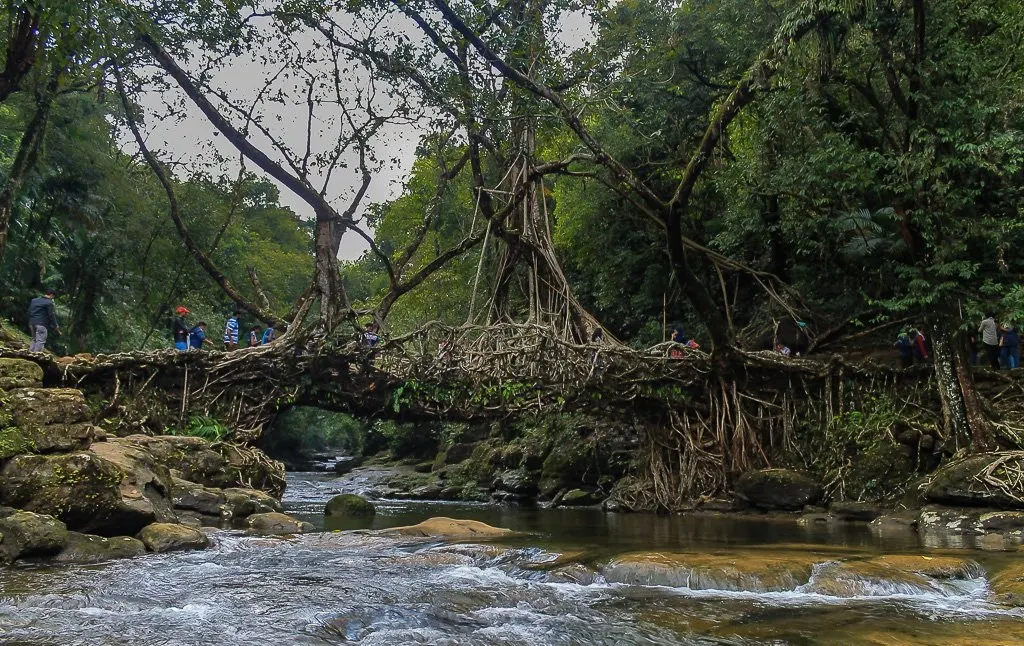More than five hundred years ago, in the Indian state of Meghalaya, people began to build bridges with tree roots. The so-called "living bridges" or "root bridges" are indispensable for the local population.
The 'double decker' is the most famous living root bridge in all of India. Located in the village of Nongriat in the state of Meghalaya, it is a natural beauty that connects the community with the world and fuels sustainable tourism in a remote region of the country.
 |
| Living Root Bridge |
It is sustainable development at its finest. The ancestors of the Khasi community planted a tree that two and a half centuries later would become a bridge that they were in charge of building and maintaining over time.
It is a wooden structure of more than 250 years whose roots managed to grow and lengthen over the years, entangle and mix with each other to form a two-story suspension bridge that can be walked on. Both living platforms are located on top of a mighty river that grows constantly due to the usual rains in the area.
 |
| Living Root Bridge |
The beautiful 'Umshiang' bridge became the main tourist attraction in the village and also a fixed income for the Khasi, a tribe where women carry the weight of the home. Over time, this community has been adapting its spaces to create hostels that welcome curious foreigners who want to see and be photographed next to the emblematic natural construction.